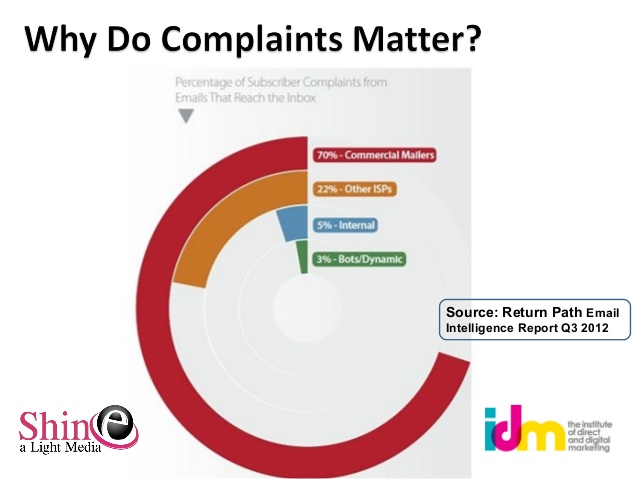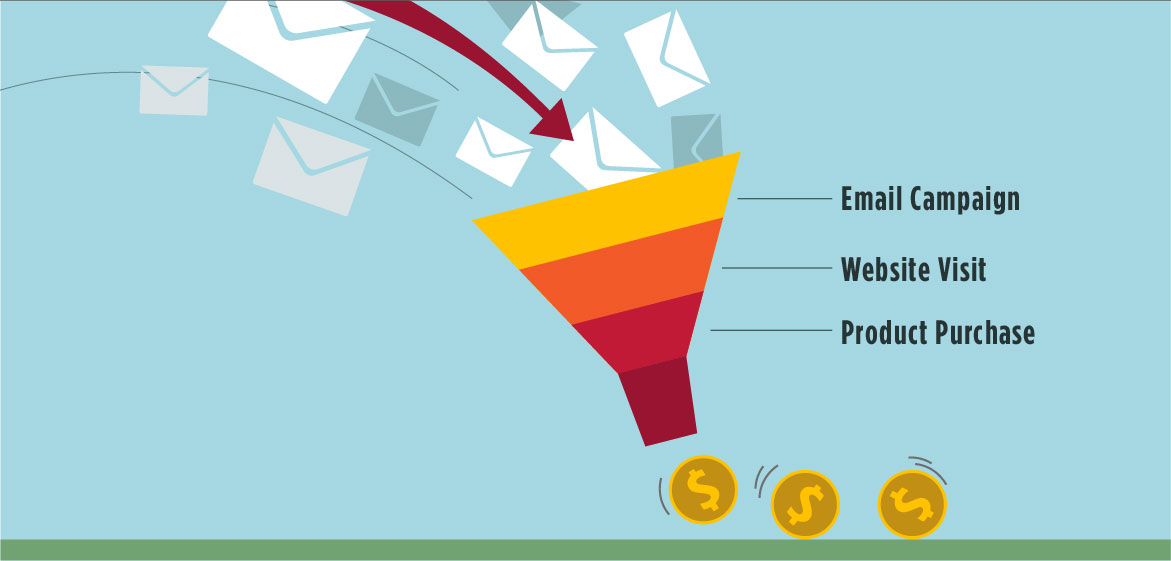To measure the success of an email marketing campaign, track key metrics like open rates, click-through rates, and conversions. These metrics provide clear indicators of how well your campaign is performing.
Email marketing remains a powerful tool for businesses. It helps connect with customers and drive sales. But how do you know if your campaign is working? By analyzing specific data points, you can gauge its effectiveness. This process involves looking at the number of emails opened, links clicked, and actions taken by recipients.
Understanding these metrics can help you refine your strategy. It ensures that your emails engage and convert your audience. Let’s dive deeper into the methods to measure your email marketing success effectively.
Setting Clear Objectives
Setting clear objectives is the first step in measuring the success of your email marketing campaign. Without clear objectives, you cannot gauge the effectiveness of your efforts. Clear objectives give you a roadmap. They help you track your progress and refine your strategies.
Define Goals
Defining goals is crucial. What do you want to achieve? Do you aim to increase sales, boost website traffic, or grow your subscriber list? Each goal requires a different approach. Be specific. Instead of saying, “I want more subscribers,” say, “I want 500 new subscribers this month.” This clarity helps in measuring success.
Identify Key Metrics
Identify key metrics to track your progress. Metrics are indicators of your campaign’s performance. Open rates show how many people opened your email. Click-through rates tell you how many clicked on links. Conversion rates reveal how many completed the desired action. Other metrics include bounce rates and unsubscribe rates. Each metric offers valuable insights. Choose metrics that align with your goals. For example, if your goal is to increase sales, focus on conversion rates.

Credit: ideafoster.com
Building A Target Audience
Building a target audience is crucial for the success of an email marketing campaign. Understanding who your audience is and what they need can help tailor content, leading to higher engagement and conversion rates.
Segment Your List
Segmentation involves dividing your email list into smaller groups based on specific criteria. This can include:
- Demographics: Age, gender, location
- Behavioral Data: Purchase history, website activity
- Interests: Preferences, past interactions
Segmenting your list ensures that each group receives content relevant to their interests and behaviors. For example, sending a discount code to customers who frequently purchase or providing educational content to new subscribers.
Personalize Content
Personalization goes beyond just using the recipient’s name. It involves creating content that resonates with each segment of your audience. Personalized content can include:
- Product Recommendations: Based on past purchases
- Tailored Offers: Special discounts for loyal customers
- Relevant Articles: Based on user interests
Use data to understand your audience’s preferences. Personalized emails can lead to higher open rates, click-through rates, and conversions. For instance, if a customer recently bought a camera, you can send emails about camera accessories or photography tips.
Crafting Compelling Content
Creating compelling content is crucial for the success of any email marketing campaign. It keeps your audience engaged and encourages them to take action. In this section, we will explore how to craft content that resonates with your readers.
Write Engaging Subject Lines
Subject lines are the first thing your audience sees. They need to grab attention and make your readers want to open the email. Here are some tips for writing engaging subject lines:
- Keep it short and sweet. Aim for 6-10 words.
- Use action words to inspire curiosity.
- Personalize with the reader’s name or interests.
- Include numbers or lists to highlight value.
- Avoid spammy words like “free” or “urgent”.
Create Valuable Content
Valuable content keeps your readers engaged and encourages them to take action. Here are some ways to ensure your content adds value:
- Know Your Audience: Tailor content to their needs and interests.
- Provide Solutions: Address their pain points and offer solutions.
- Use Clear Language: Avoid jargon and complex sentences.
- Include Visuals: Use images, infographics, or videos to enhance understanding.
- Call to Action: Encourage readers to take the next step, whether it’s visiting your site, making a purchase, or sharing your content.
By focusing on writing engaging subject lines and creating valuable content, you can significantly improve the effectiveness of your email marketing campaign. Remember, your goal is to connect with your audience and provide them with content that they find useful and engaging.
Optimizing Email Design
Optimizing Email Design is crucial for the success of your email marketing campaign. A well-designed email attracts attention and encourages engagement. Here are key tips to optimize your email design.
Ensure Mobile Compatibility
Most people read emails on their mobile devices. To ensure your emails are mobile-friendly, use responsive design. This means your email will adapt to different screen sizes. A single-column layout works best on mobile. Large fonts and buttons also help. Avoid using small fonts and tiny buttons that are hard to click.
Create a simple and clean design. Use short paragraphs and bullet points. This makes your email easy to read on a small screen. Test your email on various devices. Ensure it looks good on both iOS and Android.
Use Eye-catching Visuals
Strong visuals can make your email stand out. Use high-quality images and graphics. They can grab attention and convey your message quickly. Ensure your images are relevant to your content. Avoid using stock photos that look generic.
Balance your text and images. Too many images can slow down loading times. This might frustrate your readers. Use ALT text for your images. This helps if the images do not load. Your readers can still understand the context.
| Element | Tip |
|---|---|
| Header | Use a clear and compelling header. |
| Body | Keep it concise and engaging. |
| Call to Action | Make it prominent and easy to click. |
By following these tips, you can create effective email designs. This will help you measure the success of your email marketing campaign.
Analyzing Open Rates
Analyzing open rates is crucial for understanding your email campaign’s performance. Open rates indicate how many recipients opened your email. This metric helps gauge interest and the effectiveness of your subject lines.
Track Open Rates
Tracking open rates starts with using email marketing software. These tools automatically track open rates. Look for the open rate percentage in your dashboard. Compare this rate with industry standards to see how you are doing. Higher open rates mean your emails are engaging. Lower rates suggest a need for improvement.
Improve Open Rates
Improving open rates requires a few strategies. First, craft compelling subject lines. Keep them short and interesting. Personalize your emails. Use the recipient’s name in the subject line. This makes the email feel more personal. Also, optimize your send times. Test different times to see which works best. Analyze the results and adjust accordingly.
Another tip is to segment your audience. Group recipients by interests or behaviors. Tailor your emails to each group. This increases relevance and engagement. Finally, ensure your emails are mobile-friendly. Many users check emails on their phones. A good mobile experience can boost open rates.
Monitoring Click-through Rates
Measuring the success of an email marketing campaign is crucial. One of the key metrics to track is the Click-Through Rate (CTR). Monitoring CTR helps you understand how engaging your content is and how well your audience is responding to your call-to-actions (CTAs).
Measure Click Rates
To measure click rates, you need to calculate the percentage of recipients who clicked on a link in your email. Use the following formula:
Click-Through Rate (CTR) = (Number of Clicks / Number of Delivered Emails) x 100For example, if you sent 1,000 emails and 100 recipients clicked on a link, your CTR would be 10%. This metric helps you gauge the effectiveness of your email content and links.
Boost Click Rates
Boosting click rates requires several strategies:
- Compelling Subject Lines: Craft interesting subject lines that encourage recipients to open your emails.
- Clear CTAs: Use clear and concise call-to-actions. Make sure they stand out.
- Personalization: Address recipients by name and tailor content to their interests.
- Mobile Optimization: Ensure your emails are mobile-friendly. Many users read emails on their phones.
- A/B Testing: Test different versions of your emails to see which one performs better.
By implementing these strategies, you can increase your click rates and improve your email marketing campaign’s success.
Evaluating Conversion Rates
Evaluating conversion rates is key to understanding the success of your email marketing campaign. Conversion rate shows how many recipients took the desired action. This could be making a purchase, signing up for a newsletter, or downloading a resource. It’s a vital metric that reveals how well your emails are working.
Track Conversions
To track conversions, start by setting clear goals. Decide what action you want your recipients to take. Use tools like Google Analytics to track these actions. Create a unique URL for each email link to see which ones drive the most conversions.
Use tracking pixels in your emails. These tiny images collect data on how recipients interact with your email. They can show you who opened the email and who clicked on links. This data helps you understand which parts of your email are most engaging.
Enhance Conversion Strategies
Once you track conversions, look for ways to improve. Review your email content. Is your call-to-action clear? Make sure your email layout is clean and easy to read. Test different subject lines to see which ones get more opens. A/B testing can help you find the best combinations.
Segment your email list. Group your subscribers based on their interests or behaviors. Tailor your emails to each group for better engagement. Personalized content often leads to higher conversion rates.
Finally, analyze your results regularly. Look for patterns in your data. What types of emails get the most conversions? Use this information to refine your strategies. Continuously improving your approach will help you achieve better results over time.
Assessing Overall Roi
To measure the success of your email marketing campaign, it’s essential to assess the overall ROI. This gives you a clear picture of how your campaign impacts your bottom line. You can identify what works and what needs improvement. By understanding ROI, you can allocate resources more effectively.
Calculate Roi
Calculating ROI involves a simple formula:
ROI = (Net Profit / Cost of Investment) x 100Start by determining your net profit. This is the revenue generated from your email marketing campaign minus the costs associated with it. These costs can include:
- Email platform fees
- Content creation costs
- Design expenses
- Personnel costs
Next, divide your net profit by the cost of investment. Multiply the result by 100 to get your ROI percentage. Here’s an example:
| Metric | Value |
|---|---|
| Revenue | $10,000 |
| Costs | $2,000 |
| Net Profit | $8,000 |
| ROI | (8,000 / 2,000) x 100 = 400% |
A 400% ROI means you earned four times what you invested.
Adjust Budget
Understanding your ROI helps in adjusting your budget. If your ROI is high, consider investing more in your email marketing campaign. This can lead to greater returns. If your ROI is low, analyze the data to see where you can cut costs or improve effectiveness.
Here are some tips:
- Review Email Content: Ensure your emails are engaging and relevant.
- Segment Your Audience: Target specific groups for better results.
- Test and Optimize: Use A/B testing to find what works best.
- Monitor Metrics: Keep an eye on open rates, click-through rates, and conversions.
By carefully adjusting your budget based on ROI, you can maximize the success of your email marketing campaigns.
Leveraging A/b Testing
Leveraging A/B testing can significantly improve the success of your email marketing campaign. A/B testing helps you understand what works best for your audience by comparing two versions of an email. This process helps you make data-driven decisions and refine your strategies over time.
Test Different Elements
To start with A/B testing, you need to test different elements of your email. These elements can include:
- Subject Lines: Test short vs. long subject lines.
- Call-to-Action (CTA): Compare different CTA phrases.
- Email Design: Test various layouts and images.
- Content Length: Short vs. detailed content.
- Send Times: Morning vs. evening sends.
By testing these elements, you can identify which aspects resonate most with your audience.
Analyze Test Results
After conducting your tests, it’s crucial to analyze the results. Focus on key metrics such as:
- Open Rate: Which subject line had a higher open rate?
- Click-Through Rate (CTR): Which CTA generated more clicks?
- Conversion Rate: Which email led to more conversions?
- Unsubscribe Rate: Did any email cause more unsubscribes?
Use these insights to refine your email marketing strategy. Ensure you test one element at a time for accurate results.
| Metric | Email A | Email B |
|---|---|---|
| Open Rate | 20% | 25% |
| Click-Through Rate | 5% | 7% |
| Conversion Rate | 3% | 4% |
| Unsubscribe Rate | 0.5% | 0.3% |
By leveraging A/B testing and analyzing the results, you can enhance the effectiveness of your email marketing campaigns. Make informed decisions based on data, and continuously improve your strategies.

Credit: optinmonster.com
Utilizing Feedback
Utilizing Feedback is a crucial aspect of measuring the success of an email marketing campaign. Listening to your subscribers provides valuable insights. This helps improve future campaigns and boosts engagement. Feedback can highlight areas that need improvement. It can also show what is working well. Here are two key steps to effectively utilize feedback.
Gather Subscriber Feedback
To gather feedback, start by asking your subscribers directly. Use simple surveys. Add a survey link at the end of your emails. Make the survey short. Include only a few questions. Ask about their experience. Questions could include:
- How satisfied are you with our emails?
- What do you like about our emails?
- What can we improve?
Another way to gather feedback is through email analytics. Look at open rates, click-through rates, and unsubscribe rates. These metrics provide indirect feedback. They show how engaged your audience is. Low open rates suggest your subject lines need work. High unsubscribe rates might indicate content issues.
Implement Improvements
Once you gather feedback, use it to make changes. Start with the most common issues. If many subscribers mention the same problem, fix it first. This shows you value their input. It also improves your email performance quickly.
Use A/B testing for new changes. Test different subject lines, content formats, or send times. This helps you see what works best. Make small changes and measure the impact. Over time, these small changes lead to big improvements.
Remember to keep your subscribers informed. Let them know you are making changes based on their feedback. This builds trust and keeps them engaged.
| Feedback Method | Benefit |
|---|---|
| Surveys | Direct insights from subscribers |
| Email Analytics | Indirect feedback through engagement metrics |
By gathering feedback and implementing improvements, you can enhance your email marketing campaign. This leads to higher engagement and better results.

Credit: mailbakery.com
Frequently Asked Questions
What Metrics Define Email Marketing Success?
Key metrics include open rates, click-through rates, conversion rates, and unsubscribe rates. These show how your audience interacts.
How Can I Improve Email Open Rates?
Craft compelling subject lines. Personalize emails. Test sending times. Ensure mobile-friendly designs to boost open rates.
Why Is A/b Testing Important In Email Marketing?
A/B testing helps find what works best. Test subject lines, images, and call-to-actions to optimize campaigns.
What Is A Good Email Conversion Rate?
A good conversion rate varies by industry. Typically, 2-5% is considered good. Check your industry’s benchmark.
How Often Should I Send Marketing Emails?
Frequency depends on your audience and content. Generally, once a week is safe. Monitor engagement and adjust as needed.
Conclusion
Measuring email marketing success is crucial. Track open rates and click-through rates. Monitor conversion rates and subscriber growth. Analyze engagement metrics regularly. Use these insights to refine your strategy. Continuously improve your campaigns. Understanding these metrics helps you achieve better results.
Remember, consistent evaluation leads to success. Keep your audience engaged. Happy emailing!

Leave a Reply